Borneo expedition: saving rainforestS and endangered species
13.09.2022 | Reading time: 10 minutes
Author: Tim Laman
What’s the definition of obsession for a wildlife photographer?
If going back to the same place for over 30 years, even though it is remote, hard to get to, and difficult to work in counts as obsession, then I think I’m guilty of being obsessed with photographing the rainforest wildlife of Borneo.
I have travelled to many parts of Borneo, but specifically, I am most obsessed with Gunung Palung National Park. I first went there as a student volunteer and became inspired to be a professional wildlife and conservation photographer while spending time there to document the biodiversity and try to help raise awareness for its protection.
The flagship species here are the endangered Bornean Orangutans. It’s great to have a charismatic species like that to focus the attention for conservation, but under the umbrella of the orangutan, what is special about Gunung Palung is that there is so much more diversity of life.
This habitat, which contains the biggest and most valuable hardwood trees, has been mostly logged across this vast island.
But due to the vision of the Indonesian government to set this park aside, and especially due to tenacious western and Indonesian scientists who have kept a research station going deep in the park for over thirty years, the full diversity of species of Borneo’s lowland forests survives here.
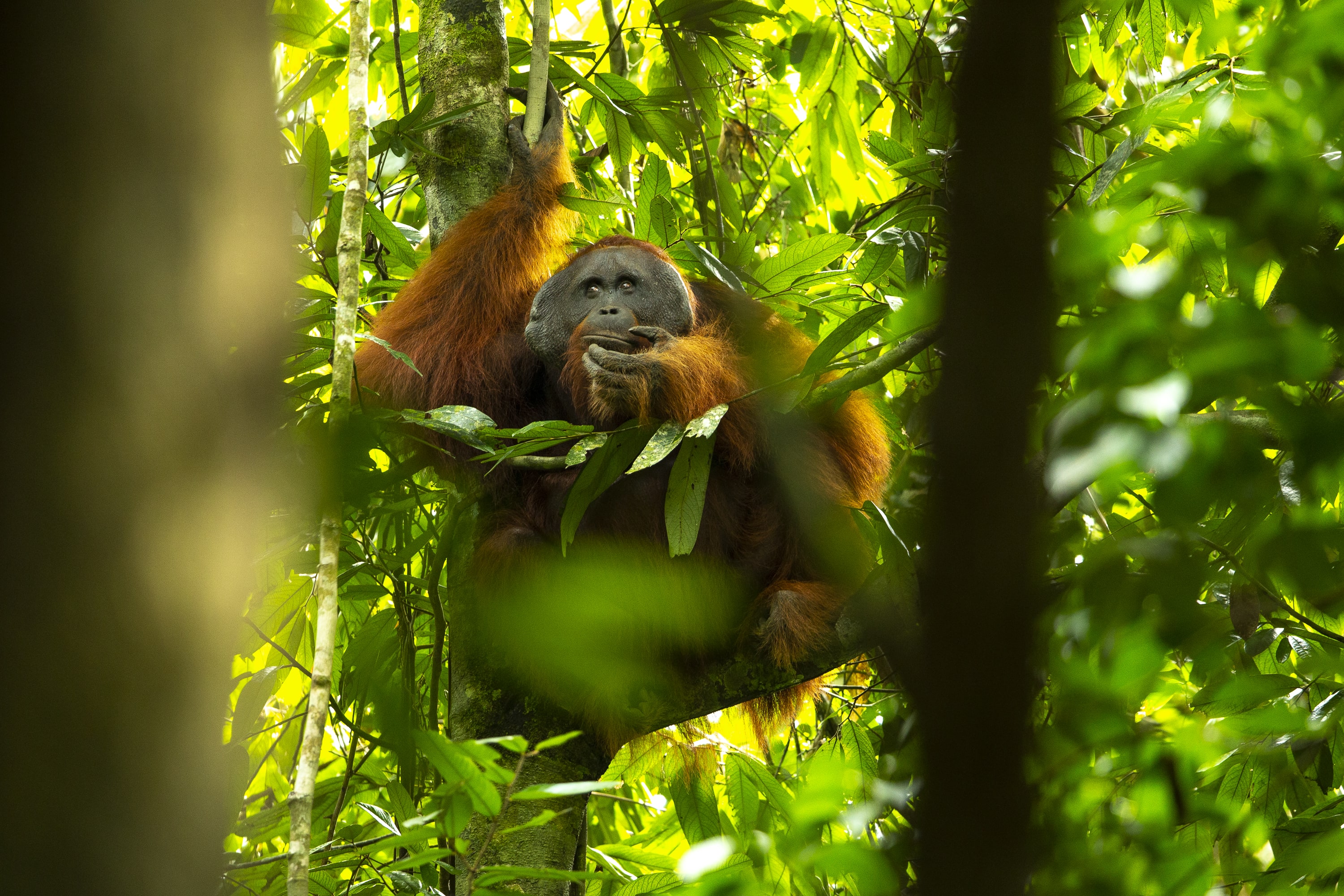

Photographing animal life
The animal life here includes many other primate species like the endangered White-bearded Gibbon, capable of swinging through the trees on its long arms at incredible speeds. They are shy, fast, and hard to photograph, but I managed a few shots one day from a blind high in the canopy near a fruiting fig tree.
Less threatened but also declining across their range due to habitat loss are the spectacular Red Leaf Monkeys. They also stick to the trees and eat fruit, like the mother and baby that I also captured from a canopy blind.
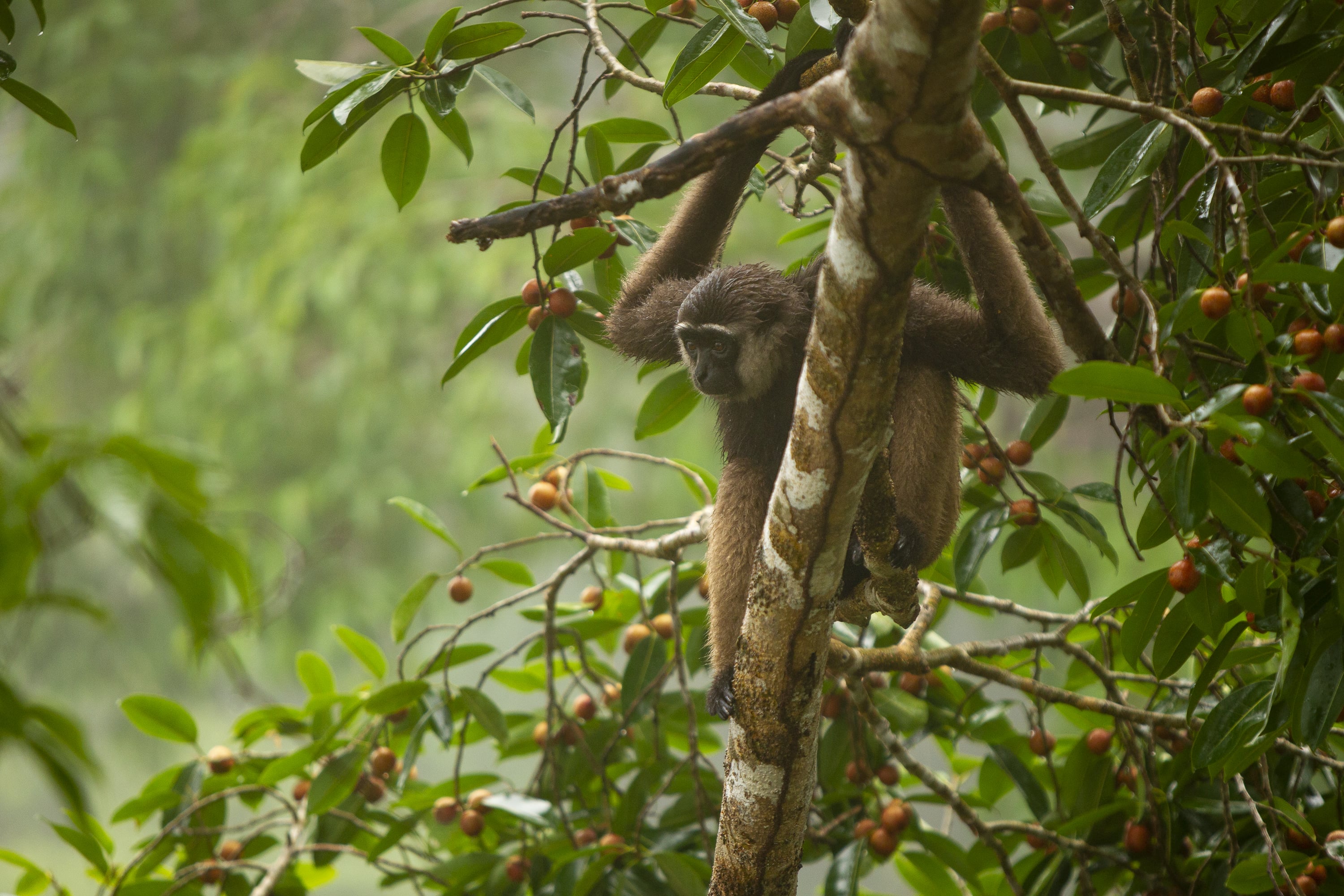



Some of my preferred subjects to photograph are the birds. They are especially challenging in the tall rainforest of Borneo, but the diversity of species is remarkable (there are over 240!).
Many of the most spectacular, such as Hornbills, are also threatened species, and it is important to educate people that these birds need large, healthy rainforest areas to survive. Putting in the effort to climb trees and wait in blinds near fruiting trees can pay off with a visit by my favorite bird in Borneo, the Rhinoceros Hornbill. You can hear them coming as their enormous wings beat the air, and if one lands near me in the canopy, I feel a surge of excitement as I try to catch a glimpse of it and hopefully capture an image.
Finding fruiting trees that attract birds is only one way to photograph them, however.
Another excellent approach is to search for nests. One of the other hornbill species, the Bushy-crested Hornbill, is a noisy bird that lives in family groups. When the female is nesting, she remains inside the tree cavity where her nest is, and family members bring food for her and the chicks.
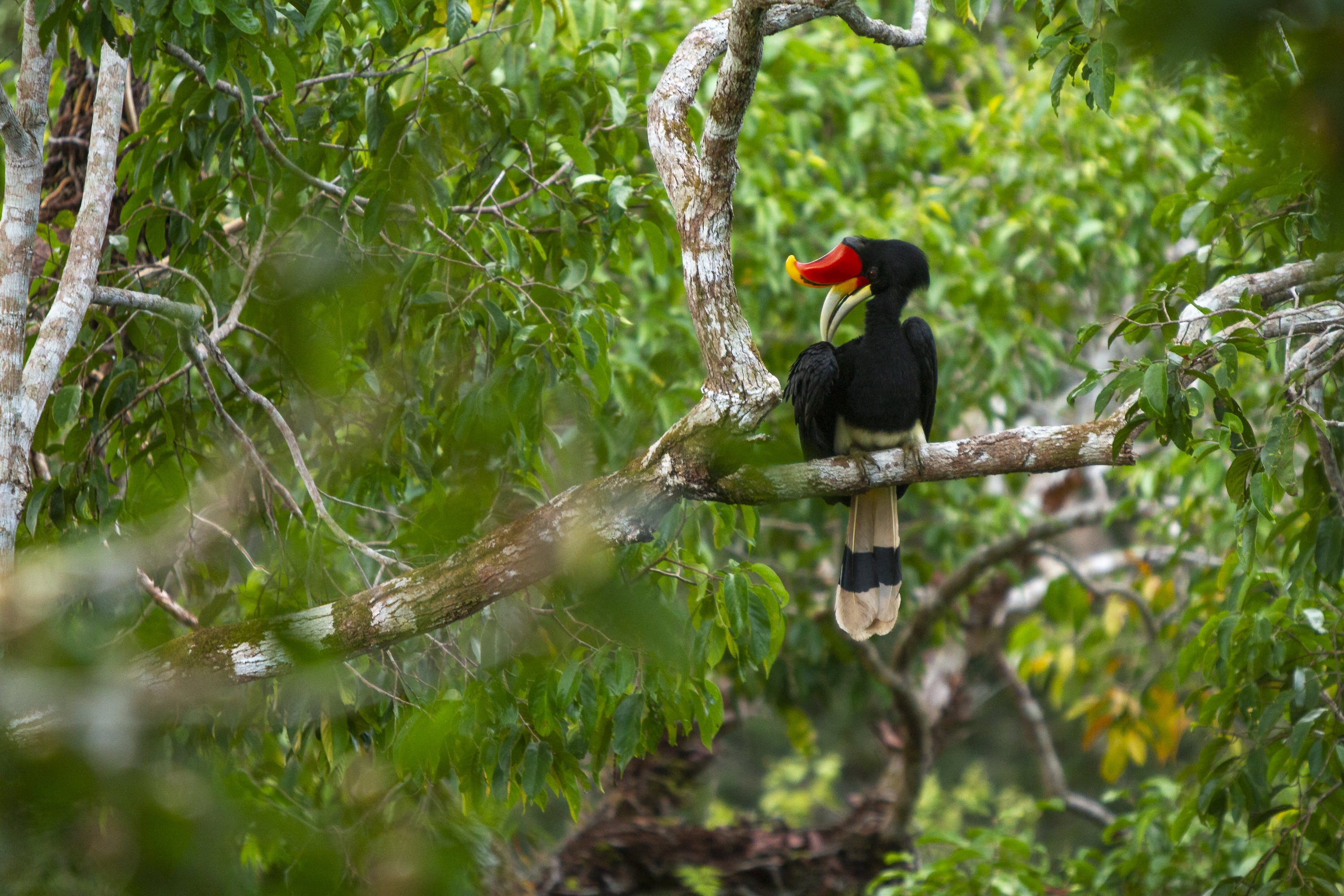

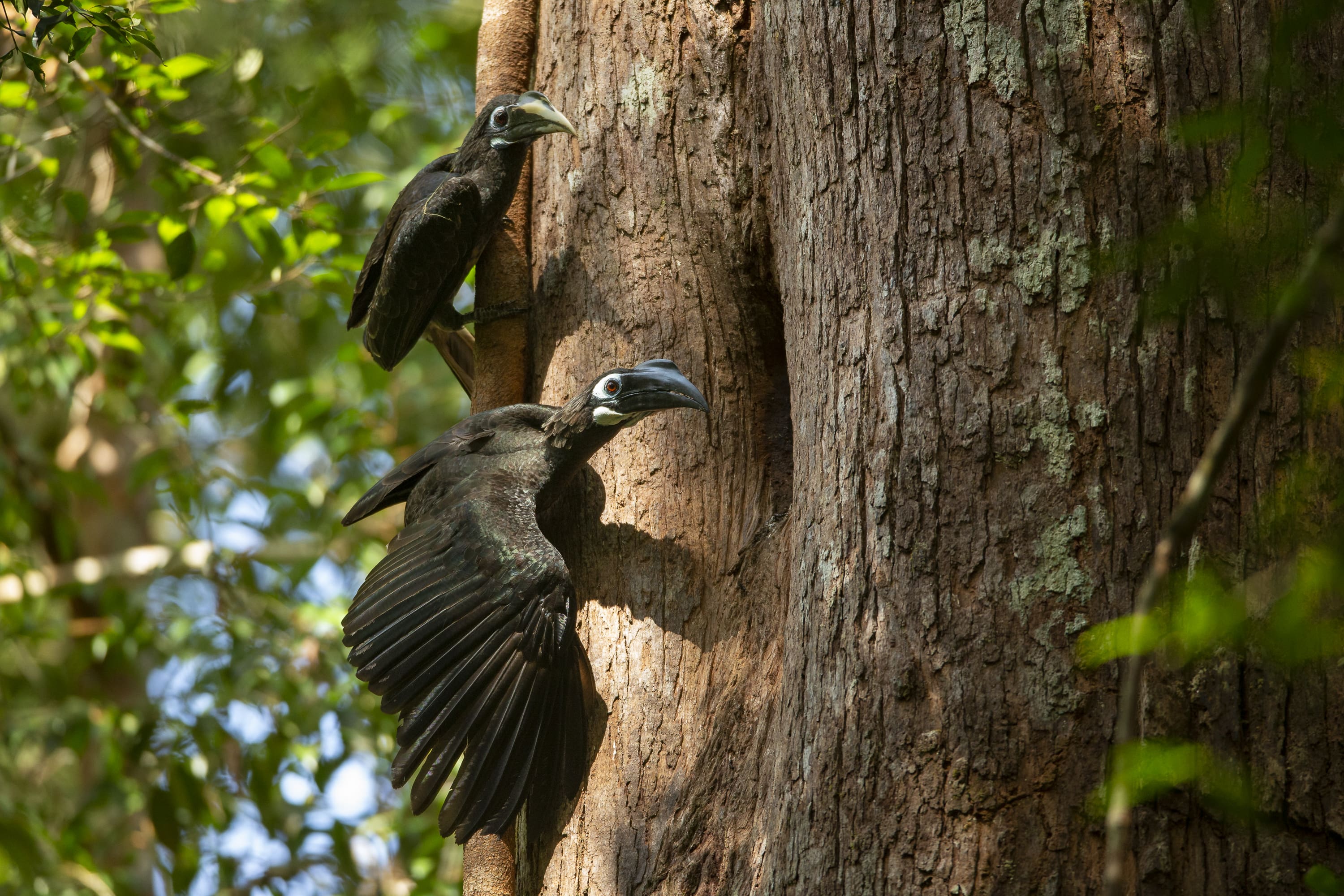

"Many of these species are endangered, mostly due to the loss of suitable habitat as rainforest areas shrink across the region.
But as long as we appreciate the value of maintaining the full diversity of living species on earth, and places like Gunung Palung can remain protected, then I am optimistic about the future."
Gear used
I use a wide variety of camera equipment depending on the situation and desired product.
For my main still photography work, I have used Canon equipment for years and a tripod is an absolutely essential piece of equipment in the dark rainforest and is used for nearly every shot. There is nothing more frustrating than equipment that fails you or is slow or difficult to use. I’ve been using Gitzo tripods for over twenty-five years: they had the well-deserved reputation even back then of being the most rugged and reliable.
I usually travel with at least two Gitzo tripods.
Systematic and Gimbal Head
A Systematic Series 3 extra tall model in combination with the Gimbal head is what I like for still photography with big, heavy lenses and fast-moving subjects. A tripod that goes higher than your head can be very useful to be able to extend one or two legs well below your feet, down the hill, and still be able to work with your camera at eye level, photographing wildlife.
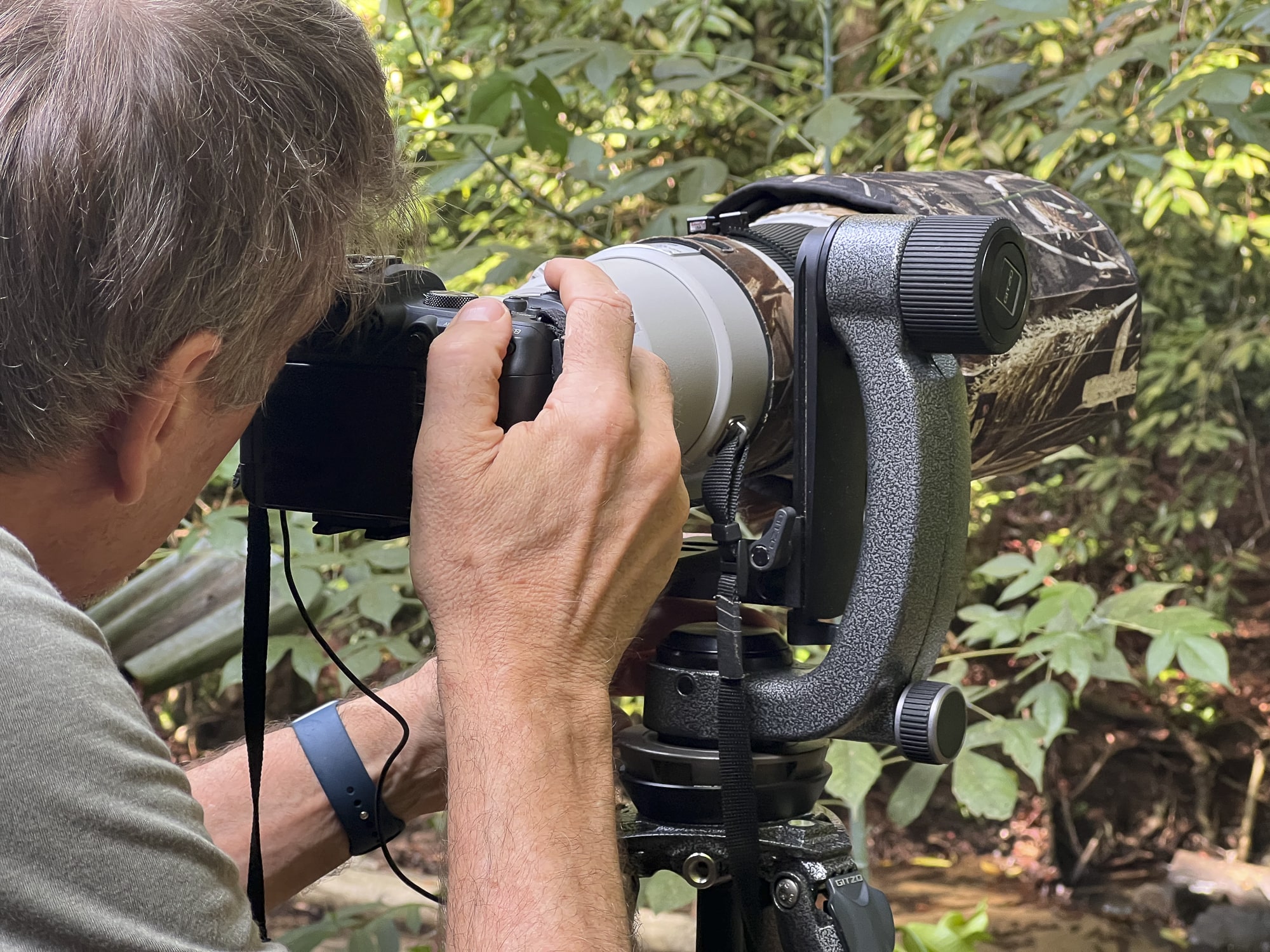

Mountaineer and Two Way Head
When I’m going on a lighter hike and might want to shoot landscapes and also be able to shoot some video, I use a Mountaineer tripod with the Two-way Fluid head. This light and compact head is very versatile and works fine with lenses up to the 100-400 f5.6 range. It is also an ideal choice if you are a birder who uses a spotting scope. It is easy to balance the scope and adjust friction.


I think it would be fair to say that, besides being obsessed with documenting the wildlife of Gunung Palung, I’m also obsessed with having the right photographic equipment to do the job.
I hope you found this blog post to be informative and helpful. Good luck with your own photographic endeavors if you are a photographer, or please just help us spread the word about rainforest conservation and appreciation of rainforest wildlife. Thanks for tuning in, and you can find more of my stories from the field in my Wildlife Diaries blog.
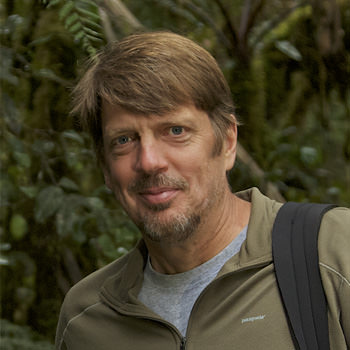

Tim Laman
Tim Laman is a field biologist and wildlife photojournalist. Tim first went to Borneo in 1987 and his pioneering research in the rain forest canopy led to a PhD from Harvard and his first National Geographic article in 1997. He has pursued his passion for exploring wild places by becoming a regular contributor to National Geographic magazine where he has published 23 feature stories.

























